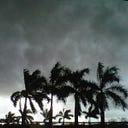maps and histories of the city
The image of a city is a sum total of aspirations of people of a period. As this people group change so does the looming perception of it. Every generation, who stages in an account of the place has its fair share of patterns/ identity tags definitively ascribed to it. Though narrated linearly, history is understood, consumed with varying overlaps. These overlaps manifest in their numerous forms on the basis of an identified entity that is brought under a specific format of the record. Culture is the contributing factor of this nonlinearity as traces of the past is left behind and those left out of formal narrative make its presence known informally.
what are the key events to bring regional culture to its present form _ is a probe to layout the varying stages of city records which gave Mumbai the present state we are accustomed to. As several authors have given the solution towards a city history narrative, it’s now viable to summarise them and present them as four sessions _
a. inception of the city delineation from the fort,
b. context of this space in the larger political geographical timelines till independence,
c. post-independence development pangs and,
d. status of a contemporary city.
Based on the sectors, i.e. the industries, history subsequently catalogues the colonial trading post, mill boom and bust, liberalisation and service industry of today. Another popular account deals with historicity spatially by tackling its form, i.e. with regards to its reclamation/ expanding city boundaries.
Seven islands to a triangulation of three city neighbourhoods of Colaba, Daishar and Mulund the city geography definitely has mutated over time from the first recorded population of 20,000 in 1661 to 13 million as of 2011. These variations in narratives, derived with their form of representation, assist communicating events in the context it’s presented in.
Elaborating on the collection, maps as documents should be seen as generated from a period in time. They record several nuances of how land and its subsequent landmarks are displayed. Though the landmass has remained the same is evident from the list how habitation in the region, via its change, is reflected over the ages.
The first centre for the city was the town hall, then came the fort. Settlements and impending industrialisation arrive after that. With the growth of the city, its centres became transit hubs. The regional plan made the city one of the several settlement areas governed under a single guiding regulation mandate. Big Data analytics an outcome of the present era depicts the city as a smattering of various activity centres. Finally, Mumbai as a fabric of activity represented by the development planning exercise.
As a collection the set is structured linearly because other than an approximate point of publishing of each item, details too of early maps are sparse and more importantly, making of the city is traced as per the expanding limits of the city. This trace is in principle located on how maps dictate the becoming of Greater Mumbai.
In pursuit of staging an alternative method to look at history narratives (or curated key events of significance) are told, this collection of maps is assembled which are recognised as being used both for navigation or communication of planning directives. Purely as a gathering exercise, this document set is a pursuit to collect a source type and as a result, try and enable alternatives in how we understand the production of Mumbai.
All maps are collected as part of ongoing research on the city and its metropolitan region. They are sourced from various internet sources and published government/ public documents as part of the work. For purposes of this post, source information is not presented. File-names of internet maps is retained as such with respect to the sites they have been downloaded from which then can be used to locate origins (well ideally).
